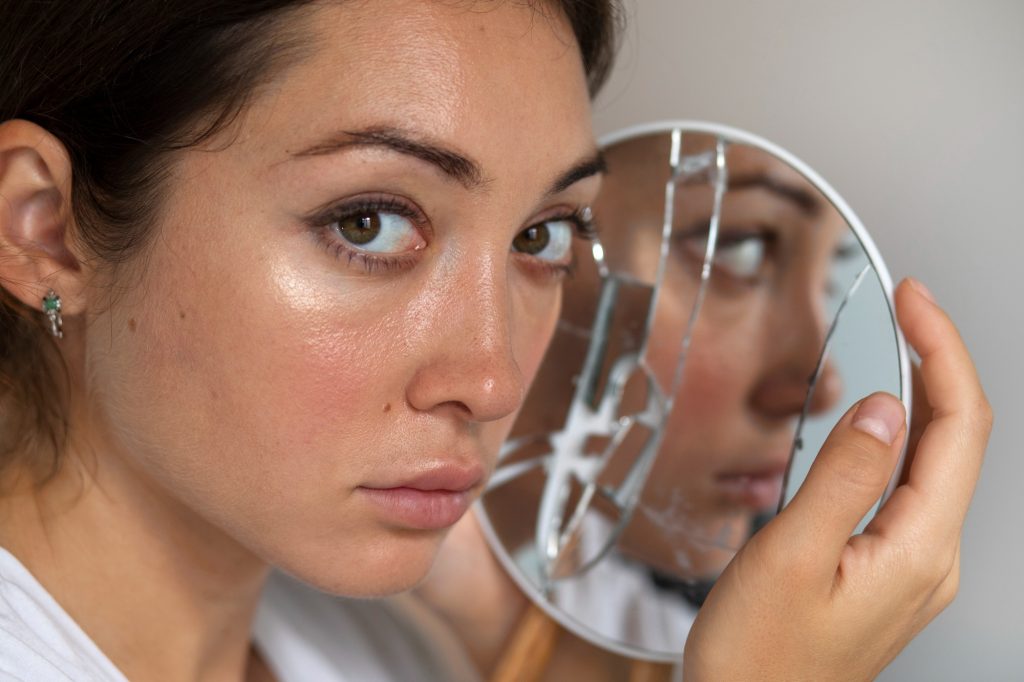Discover the various skin types recognized in dermatology and gain a deeper understanding of how they impact skincare routines and treatments.
Understanding the Different Skin Types Recognized in Dermatology
Having radiant and healthy skin is a goal that many of us strive for. But with so many different skin types out there, it can be confusing to understand what your skin needs. In this article, we will explore the various skin types recognized in dermatology, and why it’s important to know your specific skin type. So, sit back, relax, and let’s dive into the fascinating world of skin!

Introduction to Skin Types
Before we go any further, let’s start with the basics – what exactly are skin types? In the vast universe of dermal diversity, skin types refer to the unique characteristics and behaviors of our skin. These traits are determined by a variety of factors, including genetics, environmental influences, and lifestyle choices. By understanding your skin type, you can tailor your skincare routine to meet its specific needs, leading to a healthier and more vibrant complexion.
But what exactly does it mean to have a specific skin type? Well, let’s dive deeper into the world of skin and explore the different types that exist.
There are five main skin types: normal, dry, oily, combination, and sensitive. Each type comes with its own set of characteristics and challenges, making it crucial to identify which category your skin falls into.
The Importance of Knowing Your Skin Type
Knowing your skin type is like having the secret code to unlock the best skincare routine for yourself. Imagine trying to solve a puzzle without knowing the rules – not fun, right? By understanding your skin’s unique quirks, you can choose the right products and establish a skincare routine that will keep your skin feeling pampered and looking fabulous.
For instance, if you have dry skin, you’ll want to focus on hydrating products that replenish moisture and nourish your skin. On the other hand, if you have oily skin, you’ll want to look for oil-free products that help control excess sebum production.
No more wasting time and money on products that don’t work for you. Embrace the power of knowledge and let your skin shine like the star it is!
The Role of Genetics in Determining Skin Type
Genetics – the magical recipe that makes us who we are. When it comes to skin, our genetic makeup plays a significant role in determining our skin type. Just like inheriting our mother’s eyes or our father’s smile, we also inherit certain skin characteristics that shape our unique complexion.
For example, if your parents have oily skin, there’s a higher chance that you may also have oily skin. Similarly, if your family has a history of sensitive skin, you may be more prone to experiencing skin sensitivities.
While genetics provide a starting point, it’s important to note that other factors, such as environmental influences and lifestyle choices, can also impact your skin type. Exposure to harsh weather conditions, pollution, and UV radiation can all affect your skin’s behavior and contribute to the development of certain skin issues.
So, if your parents blessed you with flawless skin, count your lucky stars! If not, fret not! With a little TLC and the right skincare routine, you can still achieve the skin of your dreams.
Now that we’ve explored the basics of skin types and their determinants, let’s delve into each skin type in more detail to help you better understand and care for your skin.
The Five Basic Skin Types
Now, let’s dive into the different skin types recognized in dermatology. Drumroll, please!
Normal Skin Type
Ah, lucky you! Normal skin type is often considered the unicorn of the skincare world – rare, but absolutely magical. If you fall into this category, your skin is well-balanced, with a healthy level of moisture and minimal blemishes. You’re the envy of your friends, and rightly so!
But what exactly makes normal skin so special? Well, it’s all about that perfect harmony. Your skin produces just the right amount of sebum, keeping it hydrated without being too oily. This means you’re less likely to experience pesky breakouts or dry patches. You can confidently go about your day, knowing that your skin is naturally radiant and glowing.
Of course, it’s important to maintain this delicate balance. Keep up the good work by using gentle cleansers that won’t disrupt your skin’s natural pH levels. And don’t forget to moisturize! Even unicorns need a little love, and your skin will thank you for it.
Dry Skin Type
Does your skin often feel as parched as the Sahara Desert? If so, you may have dry skin. Dry skin can feel tight, itchy, and even flaky at times. But fear not, dear reader! With some tender loving care, you can give your skin the hydration it craves.
So, what causes dry skin? Well, it all comes down to a lack of moisture. Your skin’s natural oil production may be lower than average, leading to that uncomfortable dryness. But don’t worry, there are plenty of ways to combat this.
Invest in rich moisturizers that provide intense hydration. Look for ingredients like hyaluronic acid or ceramides, which help to lock in moisture and restore your skin’s natural barrier. And don’t forget to drink water – hydration from the inside out is the key to achieving a soft and supple complexion.
Oily Skin Type
Is your skin reminiscent of an oil slick? Don’t worry; you’re not alone! Oily skin is the result of overactive sebaceous glands, leading to excess oil production. While this can leave your skin looking shiny and prone to breakouts, there’s a silver lining – oily skin tends to age slower due to its natural moisture.
But what causes this excess oil production? Well, it’s all about genetics and hormones. Some people are simply more predisposed to having oily skin, while hormonal changes during puberty or certain times in your menstrual cycle can also play a role.
So, how can you manage oily skin without stripping away all that precious moisture? The key is balance. Avoid harsh cleansers that can strip away too much oil and trigger even more sebum production. Instead, opt for gentle cleansers and oil-free moisturizers to keep your skin feeling balanced. And remember, a little shine can be a beautiful thing!
Combination Skin Type
Why settle for one skin type when you can have the best of both worlds? If you have combination skin, you experience a delightful mixture of oily and dry areas. Commonly, the T-zone (forehead, nose, and chin) tends to be oilier, while the cheeks may be drier.
Having combination skin is like having a customized skincare itinerary. You get to tailor your routine to address the specific needs of each area. It’s all about finding that perfect balance.
So, how can you navigate this unique skin type? Well, it’s all about being strategic. Use gentle cleansers for your dry areas to avoid further dehydration, and opt for oil-free products for your T-zone to manage excess oil. By embracing the balance, you can let your skin be a true testament to adaptability.
Sensitive Skin Type
Ah, sensitive skin – the delicate flower among skin types. If you have this skin type, you might find that your skin reacts easily to various triggers, such as fragrances, harsh chemicals, or even temperature changes. It’s like your skin has a mind of its own!
But fear not, sensitive souls! With careful selection of gentle and hypoallergenic products, you can calm and soothe your temperamental skin. It’s all about finding what works for you and avoiding potential irritants.
When it comes to sensitive skin, less is often more. Stick to a simple skincare routine with minimal ingredients to reduce the risk of irritation. Look for products labeled “fragrance-free” and “hypoallergenic” to minimize the chances of triggering a reaction. Treat your skin gently, and it will reward you with a radiant and happy complexion.
Factors That Influence Skin Type
Environmental Factors
Oh, the whims of Mother Nature! Environmental factors such as climate, humidity, and pollution can wreak havoc on our skin. If you live in a dry climate, your skin may be more prone to dryness. On the other hand, a humid environment can lead to excessive oiliness.
Take note of the environment you’re in and adjust your skincare routine accordingly. Let your skin adapt like the chameleon it is!

Age and Hormonal Changes
Time waits for no one, and our skin is no exception to the passing years. As we age, our skin undergoes natural changes, with decreased collagen and elastin production leading to wrinkles and sagging.
But let’s not forget about the hormonal rollercoaster ride! Hormonal changes during puberty, pregnancy, or menopause can also have a profound impact on our skin. Acne breakouts and increased sensitivity are just a few surprises that hormones can deliver.
Remember to embrace the changes and adjust your skincare routine to meet your skin’s evolving needs. Age gracefully, dear reader – wrinkles are just a reminder of all the smiles you’ve shared!
Lifestyle and Diet
One cannot deny the powerful correlation between our lifestyle choices and the condition of our skin. If you’re a fan of late-night Netflix binges and forget to remove your makeup, your skin may not be your biggest fan.
Incorporate a healthy diet filled with fruits, vegetables, and plenty of water to give your skin the nourishment it deserves. Don’t forget to indulge in some self-care and embrace the benefits of beauty sleep. Your skin will thank you!
How to Determine Your Skin Type
The Bare-Face Method
Ready to embark on a skincare adventure? The Bare-Face Method is the perfect starting point. Begin by washing your face gently with a mild cleanser, pat it dry, and resist the urge to apply any products for a couple of hours.
Observe your skin in all its bare glory. Pay attention to any shine, dryness, or flakiness. Does your skin feel tight or comfortable? These observations will help you determine your skin type.
And remember, dear reader, this is a fun experiment – no magnifying glasses needed!
The Blotting Sheet Method
Looking for a quick and easy way to assess your skin type? Grab a blotting sheet and gently press it against different areas of your face. Take a peek at the marvelous artwork left behind.
If the blotting sheet looks like a Jackson Pollock masterpiece, congratulations – you have oily skin! If the sheet reveals only a hint of shine, you likely have normal or combination skin. And if the blotting sheet remains as pristine as a virgin snow, dry skin it is!
Keep this trick up your sleeve whenever you’re in doubt. Who knew a simple piece of paper could hold the secret to your skin’s type?
So there you have it, dear reader, a comprehensive guide to understanding the different skin types recognized in dermatology. Armed with this knowledge, you can now embark on the journey of finding the perfect skincare routine for you.
Remember, each person’s skin is unique, just like a fingerprint. Embrace your individuality and celebrate the skin you’re in – it’s the only one you’ve got. So go forth and let your skin shine like the brightest star in the sky!





